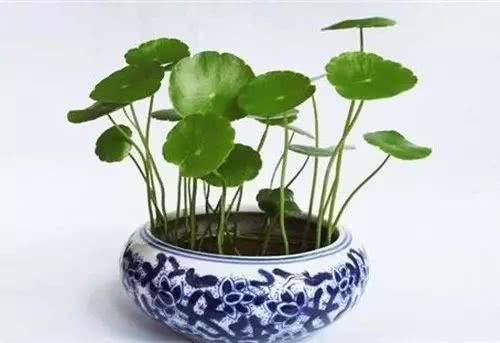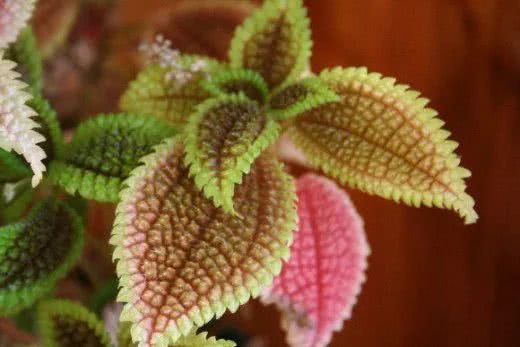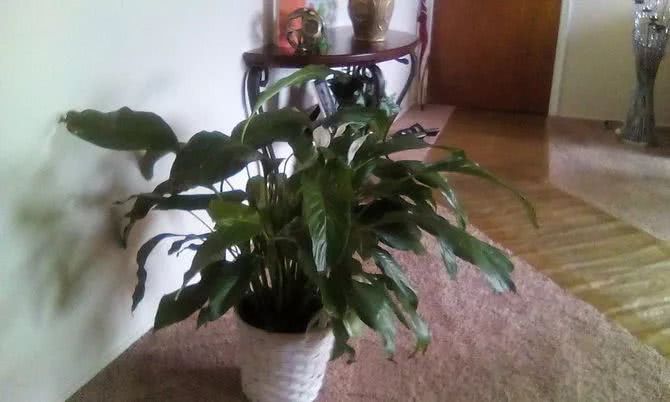No matter how much water these flowers are watered, they won't kill the novice recommendation.

Because many novices are eager to protect flowers, the most common problem in flower cultivation is that they are watered frequently and the flowers are killed.
So are there any potted plants suitable for domestic cultivation, it will not be a problem to pour more water, and it is relatively easy to breed?
The first thing that comes to mind is Tongqian grass and Guangdong evergreen. They are not afraid of water dampness, basically do not need to master the amount of water, and there are few rotten roots.
In addition to these categories that we all know, there are also some plants that are also not afraid of watering, easy to raise, and good-looking.
Zhu Jiao
Zhu Jiao plant type is gorgeous, the color is elegant and transparent, placed in the living room or balcony, very eye-catching. There are many varieties of Zhu banana, the shape of color leaves are different, but the decorative effect is very good.
Zhu Jiao likes to keep moist at all times in places with good ventilation. The growth humidity needs 80% Rue 90%. The basin soil must always remain moist, and the leaves will fall once there is a lack of water.
It should be noted that Zhu Jiao should not have too much water, otherwise the leaves will fall or the leaves will turn yellow, affecting their health.
Therefore, when selecting the soil quality of Zhu banana, the slightly acidic soil with loose drainage should be used, and the situation of stagnant water in the basin should be dealt with in time after watering.
Zhu Jiao is very shady, but he doesn't like a long-term shady environment. It is best to keep it where there is bright scattered light, or where the sun can shine sooner or later, to avoid the strong light so that the leaves will not turn yellow.
Aquatic canna
Aquatic canna grows naturally in places such as swamps, lakes and riverbanks. In the urban green environment, it is often arranged in humid places.
In a suitable environment, aquatic canna blossoms all year round and blossoms in summer and autumn in the north. Its stems and leaves are upright and luxuriant, the flowers and leaves are beautiful, the flowers and colors are bright and bright, and the planting has the function of absorbing harmful substances such as lead, mercury and cadmium, which is very suitable for family breeding.
Aquatic canna likes warm light and grows luxuriantly in places with sufficient light. If the growth temperature is lower than 10 degrees, it will seriously affect the growth. The leaves will wilt and grow slowly or stop growing, and the growth will dormant in winter in the north. Greenhouse maintenance is needed.
How much do aquatic canna like water? There is 20 centimeters of water above the soil, which is still healthy. Watering is to keep the basin soil moist at any time, or directly leave part of the shallow water in the basin.
Polygonatum odoratum
A pot of water bamboo is placed in the living room or in front of the door, green and elegant, which can not only improve the home environment, but also exorcise diseases and ward off evil spirits and generate wealth.
What is more enjoyable is that water bamboo is very easy to raise. As long as the environment is well ventilated, illuminated, watered every day, and often kept moist.
Direct sunlight in summer and long-term shade will affect growth, but lack of ventilation, water-loving bamboos may rot. Therefore, the premise of good maintenance is that the environment for placement must be selected.
When watering, you need to pay attention to the water quality, preferably clean Rain Water, or cold boiled water after placement. The tap water should be dried in advance.
Phyllostachys pubescens needs a certain amount of nitrogen and other nutrients in order to grow well and its leaves are green. Lack of fertilizer or too much fertilizer will cause the leaves to turn yellow. Thin water and fertilizer can be applied every other month.
Dryopteris przewalskii
Ferns basically like water, should be watered two or three times a day to keep moist, while spraying more water to keep the surrounding environment moist.
In terms of moisturizing, there is another way for these plants that are not afraid of water: the tray stays in it at any time, and sometimes it won't be too much if you forget to water it.
The branches of Dryopteris are thin and hard, the leaves are cascading and whirling, and the color is bright and tender. In addition to the living room, it can also be placed in the bathroom to maintain strong growth.
In the spring, shaving and pruning and fertilizing the soil lay a good foundation for the strength of the year. The cut branches and leaves can be used as cut flowers or dried flowers, and the decorative effect is also very good.
In addition to liking the wet environment, Dryopteris also likes calcareous soil. You can use some calcareous flower fertilizer when fertilizing. Tieba used to have a god who raised Dryopteris, and recommended chicken manure as fertilizer. The fern raised is indeed very exuberant.
Daily fertilization can be done once a month, but not in summer and winter. Avoid the leaves when fertilizing so as not to burn them out.
In terms of light, Dryopteris prefers a semi-overcast environment. You can see the sun and avoid the strong light. Two or three hours a day is enough. It is certainly impossible to grow strong in a position where there is no light at all.
Selaginella officinalis
Selaginella officinalis is often used to decorate bonsai and grass vats, and the flowers are green and lovely.
Selaginella likes water, the most suitable humidity during the growth period is 85% Mel 95%, need a lot of watering, the growth will be better.
Selaginella officinalis is also super resistant to drought: desert plants generally have a water content of about 16%, while Selaginella officinalis can remain alive when it is 5%, and as long as it is put into the water, it will soon recover.
Therefore, Selaginella officinalis is also called "reviving grass from the dead".
The propagation method of Selaginella officinalis can choose to be cut or placed on sandy soil, and the seedling soil should be well drained, astigmatic and shaded, and always keep moist. It can take root in about two weeks. Selaginella officinalis has shallow roots and can be planted in shallow flowerpot containers.
For breeding Selaginella officinalis, in addition to keeping the soil moist at any time, we should also pay attention to the light and temperature environment: strong light is easy to dry scorched leaves, and it is best to place them in a bright astigmatism environment; in terms of temperature, 20 degrees is the best growth temperature for Selaginella officinalis. You can keep it above 0 degrees in winter.
One thing to pay special attention to: in order to keep moist, spray water on branches and leaves every day. At this time, you can't use cold water, but warm water, which is beneficial to the growth of Selaginella officinalis.
Eichhornia crassipes
Water hyacinth is named because its petals are patterned and resemble Phoenix eyes (also like peacock tail feathers). The inflorescences are spike-shaped, cluster by cluster, and the ornamental value of the leaves is also high.
Hyacinth itself can grow in water, domestic cultivation can use humus soil or mud pond soil, pot containers put a lot of water, you can. In the process of breeding, there is no need to change water frequently, as long as it is added after the water level drops.
To raise water hyacinth, you need to put it in a place with plenty of light for four or five hours a day. If there is no light within three or four days, you will die. The application of nitrogen fertilizer during the growth period can effectively accelerate its growth.
Eichhornia crassipes need water, but the water quality is not high, too clean water source can not raise it well. It has the function of purifying water quality and can absorb heavy metals in purified water.
Because of its function of purifying water quality, it has been specially introduced as an environmentally friendly plant in rivers and lakes, but the reproductive ability of hyacinth is very strong, its growth consumes a lot of nutrients in the water, and the plant falls into the water after death to form a certain degree of pollution. As an alien species, it is easy to destroy the ecological balance of the local waters.
Family farming does not have such a problem, but we must be careful not to put it into public waters, so as to avoid harm.
If you also like growing flowers, follow us!
- Prev

Potted plants that can also bloom on low-light desktops, both of which are suitable for office cultivation.
If you want to grow some plants that are easy to blossom in a room without much light, it is very difficult. Even African violets, which need little light, need about three hours of scattered light every day to have a chance to grow and blossom.
- Next

White palm pots are cultivated indoors and pay attention to these points so that they can blossom all the year round without having to worry about leaf yellow.
White palm is the most beautiful and fresh indoor potted flower plant, it has perennial green leaves and pure white flowers, these are the reasons why it is popular, white palm is a very common perennial flowering plant, as long as the conservation environment is suitable.
Related
- Wuhan Hospital Iron Tree Blooming Result Was Instantly Frightened by the Gardener Master
- Which variety of camellia is the most fragrant and best? Which one do you like best?
- What is the small blue coat, the breeding methods and matters needing attention of the succulent plant
- Dormancy time and maintenance management of succulent plants during dormancy
- Minas succulent how to raise, Minas succulent plant pictures
- What are the varieties of winter succulent plants
- How to raise succulent plants in twelve rolls? let's take a look at some experience of breeding twelve rolls.
- Attention should be paid to water control for succulent plants during dormant period (winter and summer)
- Watering experience of twelve rolls of succulent plants
- Techniques for fertilizing succulent plants. An article will let you know how to fertilize succulent plants.

